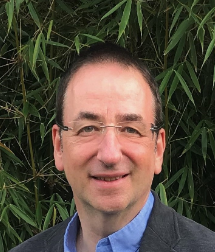Announcing the First Keynote Speaker for the 11th International Conference On Applied Hair Science: Dr David Taylor – ‘Splitting Hairs: A Biomechanical Analysis’
- TRI Princeton

- Feb 28, 2024
- 2 min read
We are delighted to be able to announce that the first keynote speaker for TRI’s 11th International Conference on Applied Hair Science is Dr David Taylor (Emeritus Professor of Materials Engineering, Trinity College Dublin). David will present a lecture entitled ‘Splitting Hairs: A Biomechanics Analysis’. The conference will take place in Red Bank, New Jersey on June 12th and June 13th. This year the conference will be a hybrid event with live streaming for virtual attendees. To register for the conference, click here.

David Taylor is Emeritus Professor of Materials Engineering at Trinity College Dublin. He is a Member of the Royal Irish Academy and holds Fellowships of the Institution of Engineers of Ireland and the Royal Academy of Medicine in Ireland. His interests are in the strength, fracture and repair of materials, including both engineering materials and natural, biological materials. He was the founding editor of the Journal of the Mechanical Behavior of Biomedical Materials. He is a practicing forensic engineer and former director of the Association of Consulting Forensic Engineers. He has published four books and about 300 research articles.
The abstract to David’s talk reads as follows:
Split ends are a common problem, but the causes of hair splitting, and the mechanics behind the splitting process, are poorly understood. This project, carried out in collaboration with L’Oreal, involved theoretical modelling and experimental testing, treating hair fracture as a biomechanics problem. The main assumption was that hair splits as a result of high stresses during the formation of tangles and their combing out, which generates longitudinal shear in the hair shaft. We devised a new test – the Moving Loop Fatigue Test – in which two hairs are looped over each other and the loop is repeatedly propagated. With this test we were able to reliably generate splits, a first for any laboratory experiment. The test was able to distinguish between good and bad quality hair and also to measure the effect of bleaching on the tendency for splitting. This work paves the way for a better scientific understanding of this well-known problem.
For more information about registering for the conference, click here. All the presentations from the 9th International Conference in 2021 and 10th International Conference in 2022 can be viewed on the TRI Library.



